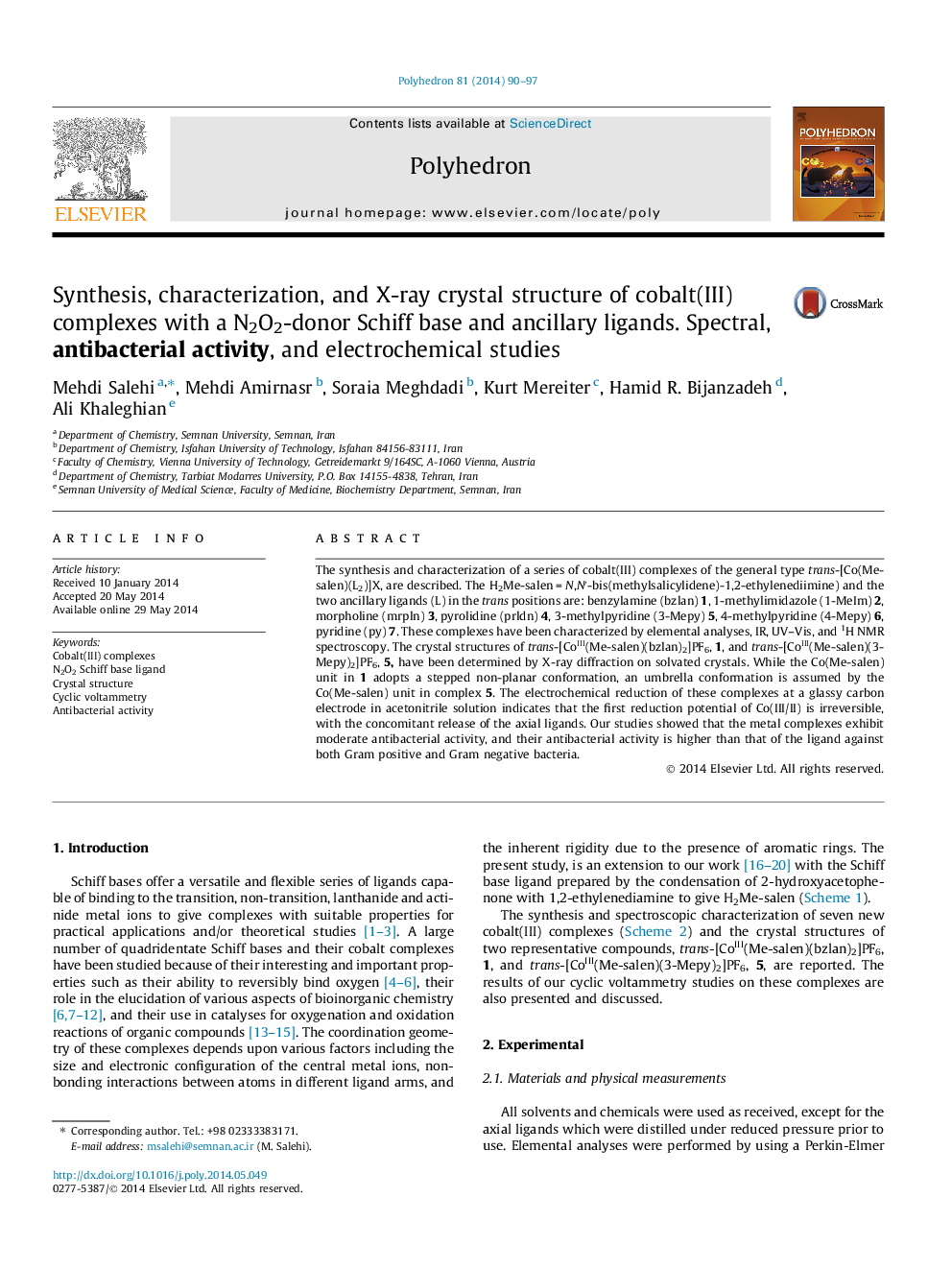| کد مقاله | کد نشریه | سال انتشار | مقاله انگلیسی | نسخه تمام متن |
|---|---|---|---|---|
| 1334408 | 1500258 | 2014 | 8 صفحه PDF | دانلود رایگان |

The synthesis and characterization of a series of cobalt(III) complexes of the general type trans-[Co(Me-salen)(L2)]X, are described. The H2Me-salen = N,N′-bis(methylsalicylidene)-1,2-ethylenediimine) and the two ancillary ligands (L) in the trans positions are: benzylamine (bzlan) 1, 1-methylimidazole (1-MeIm) 2, morpholine (mrpln) 3, pyrolidine (prldn) 4, 3-methylpyridine (3-Mepy) 5, 4-methylpyridine (4-Mepy) 6, pyridine (py) 7. These complexes have been characterized by elemental analyses, IR, UV–Vis, and 1H NMR spectroscopy. The crystal structures of trans-[CoIII(Me-salen)(bzlan)2]PF6, 1, and trans-[CoIII(Me-salen)(3-Mepy)2]PF6, 5, have been determined by X-ray diffraction on solvated crystals. While the Co(Me-salen) unit in 1 adopts a stepped non-planar conformation, an umbrella conformation is assumed by the Co(Me-salen) unit in complex 5. The electrochemical reduction of these complexes at a glassy carbon electrode in acetonitrile solution indicates that the first reduction potential of Co(III/II) is irreversible, with the concomitant release of the axial ligands. Our studies showed that the metal complexes exhibit moderate antibacterial activity, and their antibacterial activity is higher than that of the ligand against both Gram positive and Gram negative bacteria.
Seven new cobalt(III) complexes were prepared and investigated. These complexes were characterized by FT-IR, 1H NMR, UV–Vis spectroscopy and elemental analysis. The crystal structures were determined by X-ray diffraction. In all complexes, Co(III) cation had a slightly distorted octahedral environment. The electrochemical reduction of these complexes at a glassy carbon electrode in acetonitrile solution indicates that the first reduction potential of Co(III/II) is irreversible, with the concomitant release of the axial (amine) ligands. The complexes were screened for in vitro antibacterial activities against 4 human pathogenic bacteria and their minimum inhibitory concentrations were determined and good results obtained.Figure optionsDownload as PowerPoint slide
Journal: Polyhedron - Volume 81, 15 October 2014, Pages 90–97